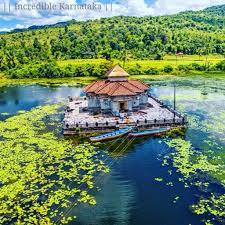What To See In Varanga?
Varanga is a relatively small and serene village in Karnataka, known for its cultural and natural attractions. While it may not have a wide array of tourist sites, it offers a unique and tranquil experience for visitors. Here are the major attractions in Varanga:
Kere Basadi (Thousand Pillar Temple)
The Kere Basadi is the most famous temple in Varanga and is situated on a small island in the middle of a lake. It is known as the Thousand Pillar Temple due to its intricately carved pillars. The temple is dedicated to Lord Parshwanath, the 23rd Jain Tirthankara, and its stunning architecture is a major draw for visitors.

Neminatha Basadi: Another significant Jain temple in Varanga is the Neminatha Basadi, dedicated to Lord Neminatha, the 22nd Jain Tirthankara. The temple also features beautifully carved pillars and intricate artwork.
Other Jain Basadis: Varanga has several other Jain Basadis, each with its own unique architectural and religious significance. These temples are rich in history and offer a glimpse into Jain culture and traditions.
Natural Scenery: Varanga is surrounded by lush greenery and has a peaceful, countryside atmosphere. The serene lake, paddy fields, and coconut groves provide beautiful views and opportunities for nature lovers to relax and enjoy the surroundings.
Rural Life and Culture: One of the main attractions of Varanga is the opportunity to experience the rural way of life in Karnataka. Interacting with the local Jain community and witnessing their customs and traditions can be a unique cultural experience.
Photography: Varanga’s picturesque landscape, especially the Kere Basadi set on an island in the lake, provides excellent photo opportunities for photography enthusiasts.
While Varanga may not have a wide range of attractions like larger cities, its simplicity and historical Jain temples, along with the tranquil natural beauty, make it an appealing destination for those seeking a peaceful and culturally enriching experience. When visiting Varanga, it’s important to respect the local culture and the religious significance of the temples.